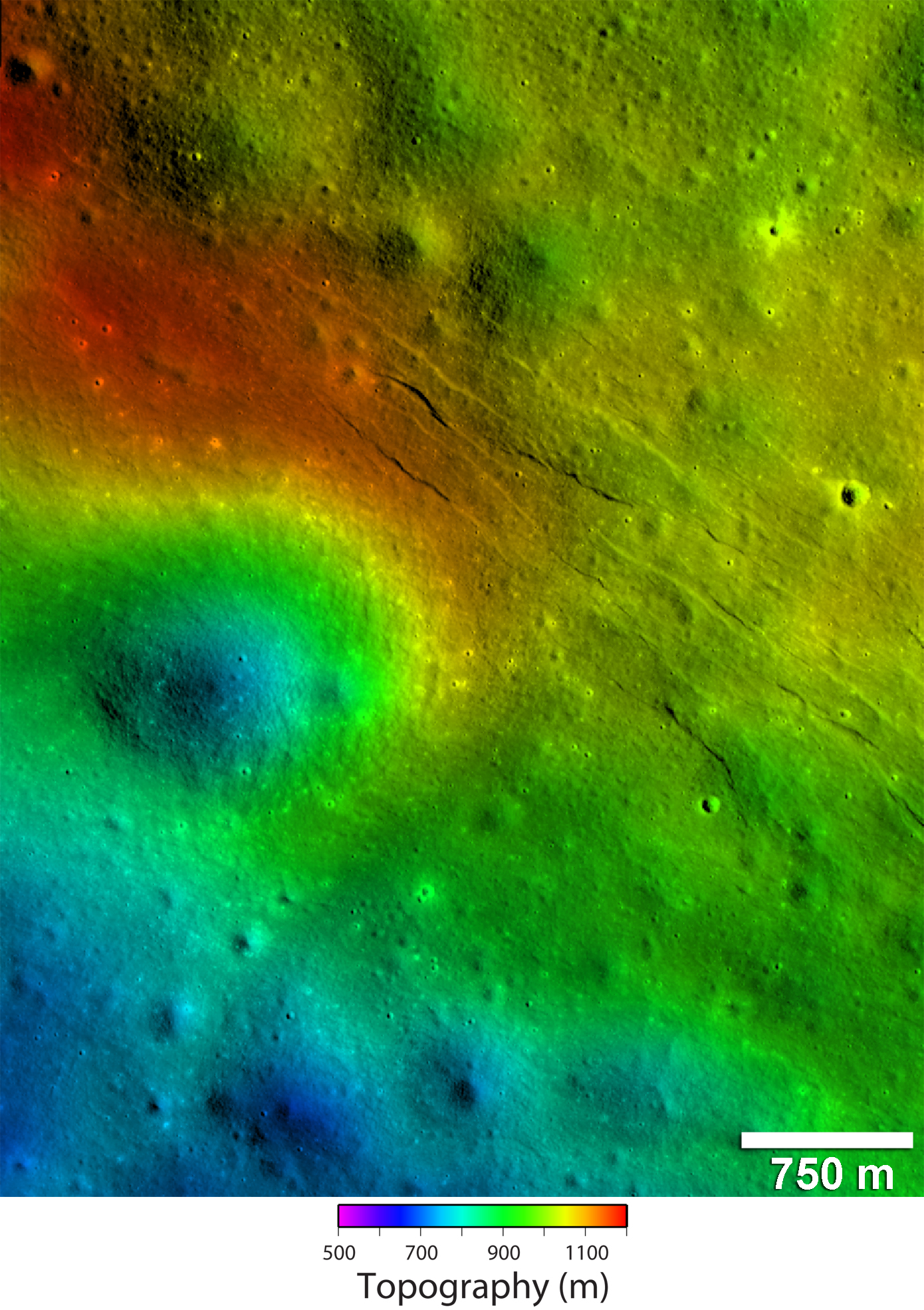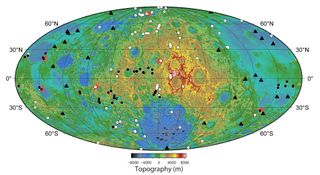Moon's Scarred Crust Hints at Recent Activity, Scientists Say

The moon's crust was apparently active far more recently than previously believed, scientists say.
These new findings raise questions about how the moon formed and evolved, researchers said.
Although the Earth's crust is still shifting, driven by the churning semimolten rock underneath it, researchers had thought the moon had cooled off much too long ago to still have any such tectonic activity. For instance, the youngest known tectonic features on the lunar landscape until now — small cliffs in the lunar highlands resulting from wrinkling of the surface as the moon's interior cooled and shrunk — are thought to be less than 1 billion years old, although by how much is uncertain.
Now, images collected by the Lunar Reconnaissance Orbiter hints the moon has probably seen tectonic activity within the last 50 million years.
In these photos, researchers spotted a dozen or so narrow, trenchlike features known as graben in the lunar highlands and in the dark plains of volcanic rock known as the mare basalts. Graben are essentially troughs with two faults or cracks in the surface on either side of them. They are thought to have formed as the lunar crust was stretched. [10 Coolest Moon Discoveries]
"Overall on the moon, you have this contracting, shrinking environment, but in some places, apparently there's this stretching extension of the crust," said study lead author Thomas Watters, a planetary scientist at the Smithsonian Institution in Washington.
The graben the scientists detected, which reach up to about 1,640 feet (500 meters) wide and 1.1 miles (1.8 kilometers) long, appear relatively pristine. This suggests they formed recently — otherwise, they would be marred more often by craters from meteor impacts over time.
Get the Space.com Newsletter
Breaking space news, the latest updates on rocket launches, skywatching events and more!
"We think they're less than 50 million years old, but they could be 10 million years old, could be 1 million years old, could have happened 40 years ago," Watters told SPACE.com. "The intriguing picture that's emerging of the moon is that there is recent geological activity going on."
Moonquakes detected by seismic sensors installed during the Apollo missions support the notion of recent activity on the moon, researchers added. All in all, the moon's interior may still be hot.
"The moon may not only have been tectonically active recently, but may still be tectonically active today," Watters said.

Models of how the moon cooled over time suggest it was totally molten after its formation, and that it should now be contracting as it cools, forcing the surface to wrinkle. However, if this was true, such compression would have suppressed the creation of graben — these ditches typically form when the crust stretches, not crinkles.
Instead, these findings suggest the moon was not completely molten after it was formed. If this were the case, the moon would not contract strongly enough to suppress the emergence of graben.

"Currently, a popular idea for how the moon formed is that it was completely molten in the beginning— after a Mars-size object hit Earth very early in its history, the debris cloud from the surviving material formed the moon," Watters said. "This may lend support to alternative scenarios that the moon was not completely molten when it formed, that only part of it was, forming a magma ocean."
Future research can look for more graben in Lunar Reconnaissance Orbiter photos once the satellite finishes imaging the moon, Watters said. He and his colleagues detailed their findings online Feb. 19 in the journal Nature Geoscience.
Follow SPACE.com for the latest in space science and exploration news on Twitter@Spacedotcom and on Facebook.
Join our Space Forums to keep talking space on the latest missions, night sky and more! And if you have a news tip, correction or comment, let us know at: community@space.com.

Charles Q. Choi is a contributing writer for Space.com and Live Science. He covers all things human origins and astronomy as well as physics, animals and general science topics. Charles has a Master of Arts degree from the University of Missouri-Columbia, School of Journalism and a Bachelor of Arts degree from the University of South Florida. Charles has visited every continent on Earth, drinking rancid yak butter tea in Lhasa, snorkeling with sea lions in the Galapagos and even climbing an iceberg in Antarctica. Visit him at http://www.sciwriter.us